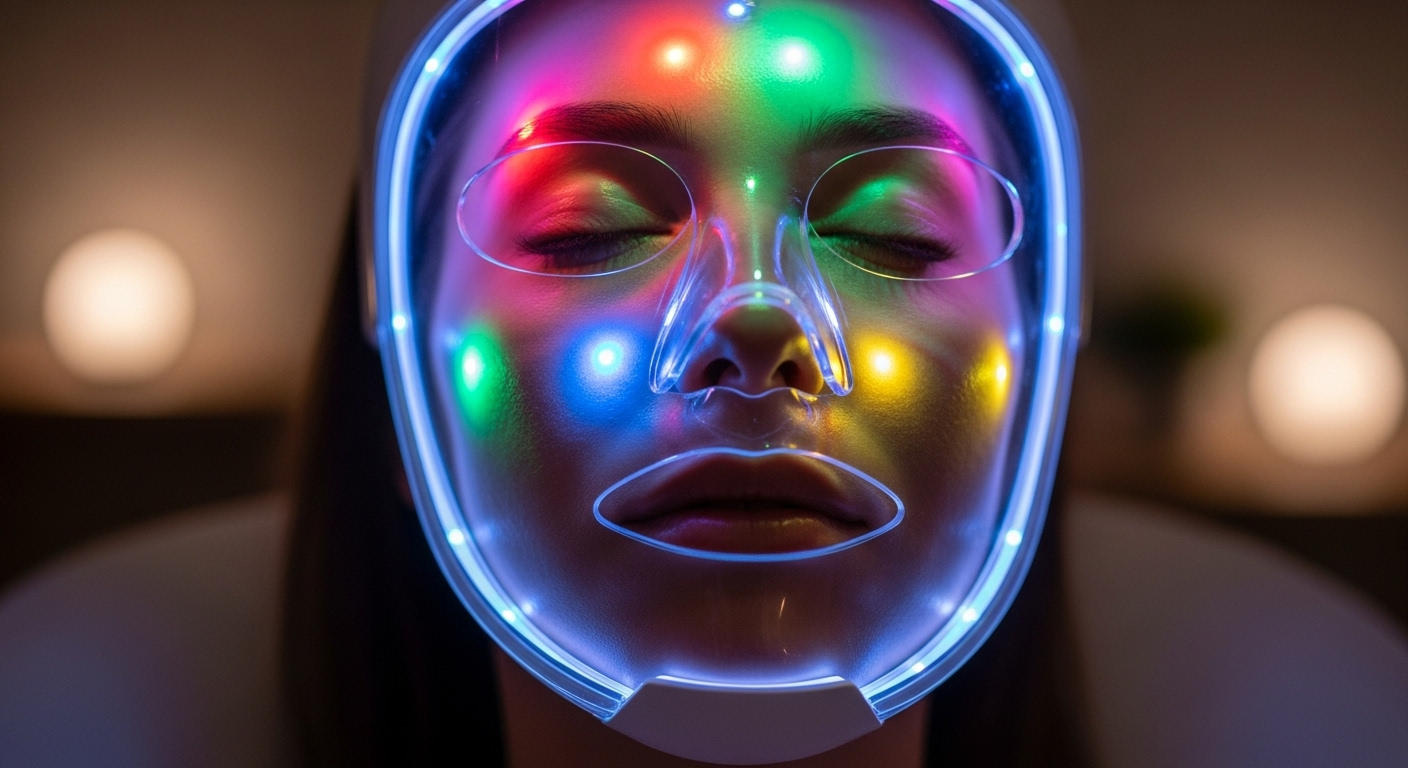Chromotherapy: The Science of Color Healing in Beauty
In the ever-evolving world of beauty and wellness, a fascinating yet often overlooked practice is gaining traction among skincare enthusiasts and spa-goers alike. Chromotherapy, also known as color therapy, harnesses the power of specific light wavelengths to promote healing and enhance overall well-being. This innovative approach integrates the principles of light science with traditional healing practices, offering a unique blend of ancient wisdom and modern technology. As the beauty industry continues to explore holistic treatments, chromotherapy emerges as a promising frontier, challenging conventional notions of skincare and rejuvenation. Its potential to influence mood, skin health, and even cellular function has piqued the interest of researchers and beauty professionals worldwide, sparking a colorful revolution in the realm of self-care.

The scientific exploration of chromotherapy gained momentum in the 1870s when Dr. Edwin Babbitt published his book “The Principles of Light and Color.” Babbitt’s work proposed that different colors could elicit specific physiological responses in the human body. This pioneering research sparked interest among medical professionals and scientists, leading to further investigations into the therapeutic potential of color.
In the early 20th century, Danish physician Niels Finsen won the Nobel Prize for his work on phototherapy, using colored light to treat skin tuberculosis. This recognition brought chromotherapy into the spotlight of modern medicine, paving the way for its integration into various fields, including psychology, alternative medicine, and eventually, the beauty industry.
The Science Behind Color Healing
At its core, chromotherapy is based on the principle that different colors correspond to specific wavelengths of light, each capable of interacting with the body in unique ways. When light of a particular color is absorbed by the skin, it can trigger biochemical reactions at the cellular level, potentially influencing various physiological processes.
Research has shown that different colors can affect the production of hormones, neurotransmitters, and other biochemical compounds in the body. For instance, blue light has been found to have antibacterial properties and may help in treating acne, while red light is known to stimulate collagen production, potentially reducing the appearance of fine lines and wrinkles.
Moreover, the impact of color on mood and mental state is well-documented. Studies have demonstrated that exposure to certain colors can influence brain activity, heart rate, and even cognitive performance. This mind-body connection forms a crucial aspect of chromotherapy’s appeal in the beauty and wellness sphere.
Chromotherapy in Modern Skincare
The integration of chromotherapy into skincare routines represents a significant shift in how we approach beauty treatments. LED (Light Emitting Diode) masks and devices have become increasingly popular, offering at-home chromotherapy sessions for various skin concerns.
These devices typically feature different color settings, each targeting specific skin issues:
- Red light: Stimulates collagen production, improves circulation, and reduces inflammation
- Blue light: Combats acne-causing bacteria and regulates oil production
- Green light: Calms irritated skin and helps even out skin tone
- Yellow light: Boosts lymphatic flow and reduces redness
- Purple light: Enhances cell regeneration and promotes a relaxing effect
High-end spas and dermatology clinics have also begun incorporating chromotherapy into their treatment menus, often combining it with other modalities like facials, massages, or hydrotherapy for enhanced results.
Beyond Skin Deep: Chromotherapy’s Holistic Benefits
While much of the focus on chromotherapy in beauty centers around its skin benefits, its potential extends far beyond surface-level improvements. Proponents of color therapy argue that it can have profound effects on overall well-being, influencing everything from sleep patterns to stress levels.
In wellness centers and holistic spas, chromotherapy rooms or pods are becoming increasingly common. These spaces allow individuals to immerse themselves in a specific color environment, potentially inducing relaxation, energizing the body, or balancing emotions.
Some reported benefits of full-body chromotherapy sessions include:
- Improved sleep quality
- Reduced stress and anxiety
- Enhanced mood and mental clarity
- Boosted immune function
- Increased energy and vitality
While more research is needed to fully validate these claims, anecdotal evidence and preliminary studies suggest that chromotherapy could play a significant role in holistic wellness practices.
The Future of Color in Beauty and Wellness
As the beauty industry continues to embrace technological innovations, chromotherapy is poised to play an increasingly prominent role. Emerging trends and developments in this field include:
- Personalized color therapy: Advanced diagnostic tools may soon allow for tailored chromotherapy treatments based on an individual’s unique skin condition and overall health status.
- Wearable chromotherapy devices: From light-emitting clothing to color-therapy jewelry, wearable tech may make chromotherapy a part of daily life.
- Integration with smart home systems: Future smart homes could incorporate chromotherapy lighting systems, automatically adjusting colors throughout the day to optimize residents’ well-being.
- Combination therapies: Research into combining chromotherapy with other treatments, such as sound therapy or aromatherapy, may yield synergistic effects for enhanced beauty and wellness outcomes.
- Virtual reality color experiences: VR technology could offer immersive chromotherapy sessions, allowing users to experience the benefits of color healing in fully customizable virtual environments.
Navigating the Colorful World of Chromotherapy
As with any emerging wellness trend, it’s essential to approach chromotherapy with a balanced perspective. While the potential benefits are intriguing, consumers should be aware of the following considerations:
- Regulation and standardization: The chromotherapy industry is still largely unregulated, making it crucial to choose reputable providers and products.
- Individual responses: The effects of color therapy can vary significantly from person to person. What works for one individual may not yield the same results for another.
- Complementary approach: Chromotherapy should be viewed as a complementary treatment rather than a replacement for traditional medical or skincare practices.
- Quality of devices: When using at-home chromotherapy devices, it’s important to invest in high-quality, safety-certified products to ensure effectiveness and prevent potential harm.
- Consultation with professionals: Before incorporating chromotherapy into a wellness routine, particularly for specific health concerns, it’s advisable to consult with healthcare professionals or certified chromotherapists.
As the beauty and wellness industries continue to evolve, chromotherapy stands out as a fascinating intersection of ancient wisdom and cutting-edge technology. Its potential to offer non-invasive, holistic benefits for both skin health and overall well-being makes it an exciting frontier in the quest for beauty and balance. As research progresses and technology advances, the rainbow of possibilities offered by chromotherapy may just become an integral part of our daily lives, painting a brighter, more vibrant future for beauty and wellness enthusiasts worldwide.





